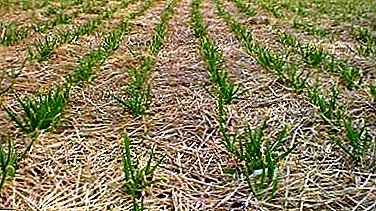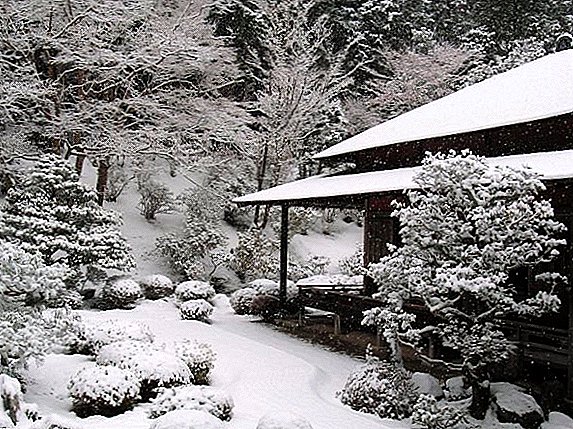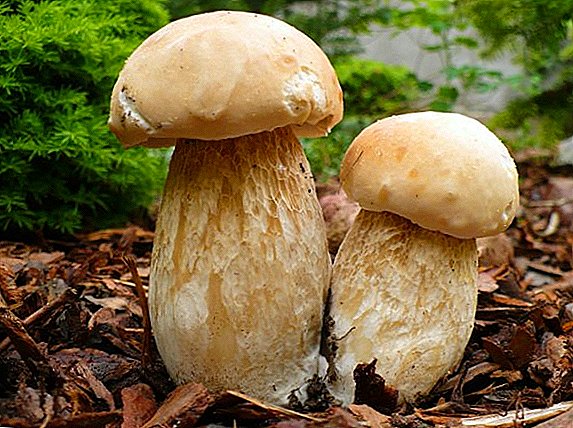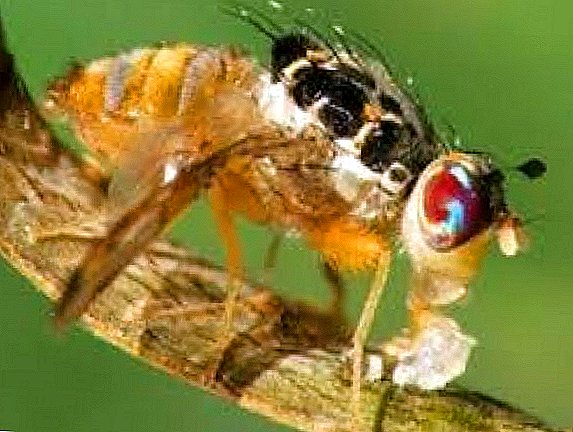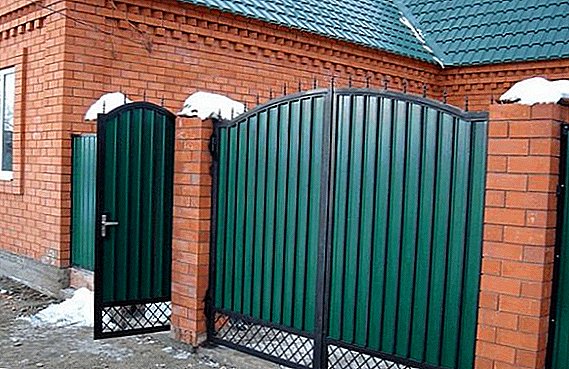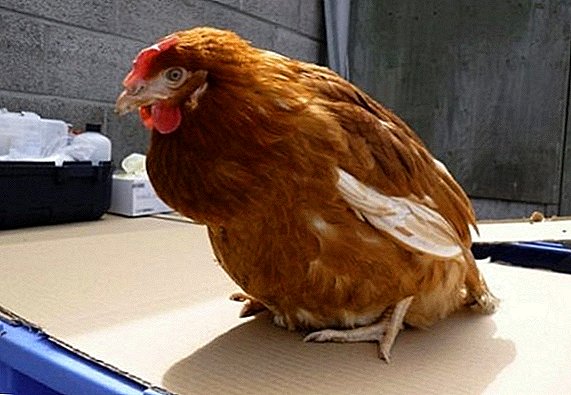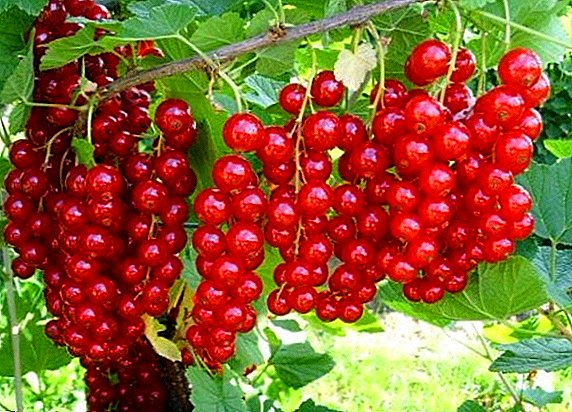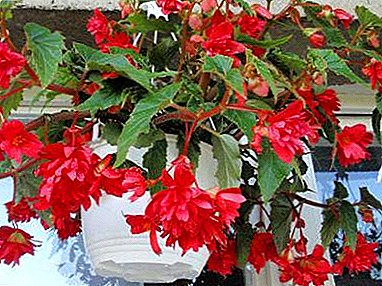
Often in the summer our attention is attracted by balconies, terraces, flower beds, decorated hanging pots with ampelous begonia. And this is not surprising: the lush cascade of bright colors is like a real salute. Almost every flower lover dreams of a similar element of decor on his site or in his apartment. What you need to know about this exotic plant?
Ampel begonia is a tuberous variety of begonia with long, falling shoots (about 30 - 40 cm), studded with bright flowers: male (large and elegant) and female (small and simple), the diameter of which is about 8 cm. Duration of flowering of one flower - 10 days. Flowering time - from spring to late autumn. Read the article on how to plant a flower, how to properly care for him at home.
The necessary conditions
Begonia is a very unpretentious and grateful flower. Observing the elementary conditions of the plant, you can achieve the desired: lush flowering begonias during the spring and autumn period.
Air. Ampel begonia loves fresh air. She will feel comfortable in a hanging basket or pot on the balcony, summer terrace, gazebo or just in a pot on a high leg, exposed to the open air in the warm season.
Attention! If this is not possible, and the flower grows in the apartment, then it will simply need frequent ventilation.
Although begonia is a hardy plant, but still it does not accept drafts, heavy rain, wind. If bad weather broke out in the street, then a container with a flower should be brought to a sheltered room.
Temperature. The optimum temperature for ampelous begonia is considered to be + 18С- + 20С, but it can easily transfer the temperature rise to + 25С and decrease to + 12С.
Shine. This flower prefers diffused sunlight or partial shade. You can’t put begonia in a dark place, because in this case shoots can be pulled out and flowering can stop.
Humidity. Begonia loves moisture, but spraying with a spray bottle is disastrous for her. Often experienced flower growers come in the following way: next to a pot of begonias place a container with water or place the pot in a pan covered with expanded clay. A layer of expanded clay is systematically moistened with water, evaporation of which will create the necessary level of humidity for begonia.
A photo
Further on the photo you can see what looks like ampel begonia.



How to plant a flower?
Ampel begonia is a tuberous, therefore, it multiplies with tubers. Planting a plant is not difficult: to do this, you need to purchase strong and healthy tubers with a diameter greater than 3 cm. Those tubers that are cleaned, free of stains and damage, and count from 3 to 7 buds on their surface, are considered good.
Care after planting in containers of ampelous begonia should be carried out in such a way as not to harm another weak plant. Watering the tubers during this period should be very careful.
You can produce watering in the pan, do not forget to drain the minutes after 15 - 20 the remaining water. When sprouts reach 5 cm in height, they are transplanted into individual pots., completely sprinkling the tuber with earth.
There is another way to plant an ampel begonia.
- Tubers convex part of the lay on a moistened cloth or a layer of sand.
- Within 2 days they are periodically sprayed with a spray of warm water and a solution of growth stimulants. When thin roots appear on the convex part, it means that the plant is ready for planting in a permanent container.
Begonia prefers loose and nutritious soil with a slightly acid reaction. It is advisable to buy the soil in the flower shop, and you can create the necessary mixture with your own hands: sheet or sod soil, coarse sand, peat mixed in a ratio of 3: 1: 1. Before planting the soil is recommended to be treated with a fungicide.
In addition to planting tubers, ampelous begonia can be grown by cuttings and from seeds, more about this can be found here.
Tuberous plant transplant
 Transplantation of ampelous begonia is carried out only when necessary: the pot has become small or there are problems with the root system. Transplantation takes place in early spring.
Transplantation of ampelous begonia is carried out only when necessary: the pot has become small or there are problems with the root system. Transplantation takes place in early spring.
- The plant is carefully removed from the old container, the roots are cleaned from the old substrate, treated with potassium permanganate or fungicide, rotten parts are cut off.
- The new tank is not completely filled with soil, the plant is placed in it and sprinkled with earth.
- Transplanted begonia should be watered frequently, and avoid direct sunlight on the plant.
Important! When choosing a flower pot, you should focus on a shallow but wide container. A prerequisite is the presence of a drainage hole to drain excess water.
It is also necessary to think in advance about the location of the future plant, as you may need attachment systems for the container in order to allow the stems of ampelous begonia to fall freely.
How to care at home?
Caring for the plant is easy to implement.
Watering
In the warm season, begonias require regular abundant watering so that the plant has enough strength to feed such a large mass of flowers. In no case should not allow drying of the roots - it threatens the death of the plant.
In winter, watering should be moderate, after the topsoil dries in a pot. The preferred type of watering is on the edges of the pot or in the pan: the plant reacts negatively to water entering the tubers.
When determining the "place of residence" of begonia, its location near heating appliances and batteries should be avoided: they dry the foliage of the plant and the top layer of soil, while the lower layers still do not have time to dry. As a result - the rotting of the roots of the flower.
Top dressing
In order for begonia to bloom for a long time and abundantly, it must be started from early spring: first with nitrogen fertilizers for a set of deciduous mass, and after the release of the first flowers - with complex fertilizers for flowering plants, which can be purchased at specialized flower shops. MIt is possible 2-3 times during the entire summer period to fertilize the begonia with organic fertilizers.
Begonia should be watered well before fertilizing to avoid root burns!
Topping
Pinching begonias - a way to achieve decorative bush by forming the crown of the selected shape.
Attention! This process takes place before flowering or after - in spring or autumn.
Having found the upper point of growth on the main stem, it is necessary to pinch it 1-2 cm. Result - in 2-3 weeks active side shoots will start growing., which will give the bush splendor and form the desired shape.
Outdoor cultivation
 In early spring, after preliminary “hardening”, the ampel begonia can be planted in open ground, which should be loose and well fertilized with organic fertilizers (for example, mullein).
In early spring, after preliminary “hardening”, the ampel begonia can be planted in open ground, which should be loose and well fertilized with organic fertilizers (for example, mullein).
During the entire spring-summer period, top dressing should continue to be produced, but with complex fertilizers. The flower should be systematically watered while avoiding stagnant moisture. The best time of day for watering is morning.
With the first frost, after the dying off of the ground part of the plant, the tubers are dug, are cleared of soil and placed in dry peat. This container is stored until the spring in the room, the average temperature in which reaches + 5C - + 12C.
- How to save the tuberous begonia in the winter?
- Tuberous Begonia Diseases
- How to plant and care for a flower?
- How to propagate the tuberous begonia cuttings?
- Terms of care and necessary conditions.
- How to grow a tuberous begonia?
You can also learn useful information about the Bolivian begonia.
Possible problems
- The leaves turn yellow and dry, shoots unnaturally drawn out, the flowers fade. There are several possible causes of this phenomenon: perhaps there is not enough light, nutrients, space in the pot. Accordingly, if the location of the basket or container is changed, the plant is transplanted into a large container, fertilizer is made with mineral and organic fertilizers (depending on the season), then with high probability we can hope to save begonia.
- New begonia leaves are small. It is enough to feed the plant with complex fertilizers.
- Begonia leaves are dry, sluggish, twisted. Not enough moisture, it is necessary to urgently water the plant.
- Begonia leaves turned yellow and droopedToo much moisture, it is necessary to allow the soil to dry. It is possible that the plant is "frozen". Then the flower must be moved to a warmer place.
- Rot at the base of the stems. The reason is waterlogging. It is important to allow the plant to dry out. It is also urgent to adjust the irrigation pattern.
- Rot on leaves and flowers. This problem occurs when spraying begonia on top. This can not be done!
Diseases and pests
Gray rot, powdery mildew, leaf rot - these are all fungal diseases that are treated by removing damaged parts and treating the entire plant, soil and the walls of the pot with fungicide solutions.
Important! The most dangerous for begonia aphid and spider mite.
Onions are effective against them: 15g of crushed onions are infused in one liter of water for 5 to 7 days, then they are filtered and sprayed on plants every five to seven days until the pests disappear completely. You can use and special drugs that sell in specialized stores.
As mentioned above, begonia is a very grateful plant. The abundance of spectacular colorful flowers will fill the house with coziness and beauty. Is this not a worthy reward for the grower for the care and attention he gave the plant?


